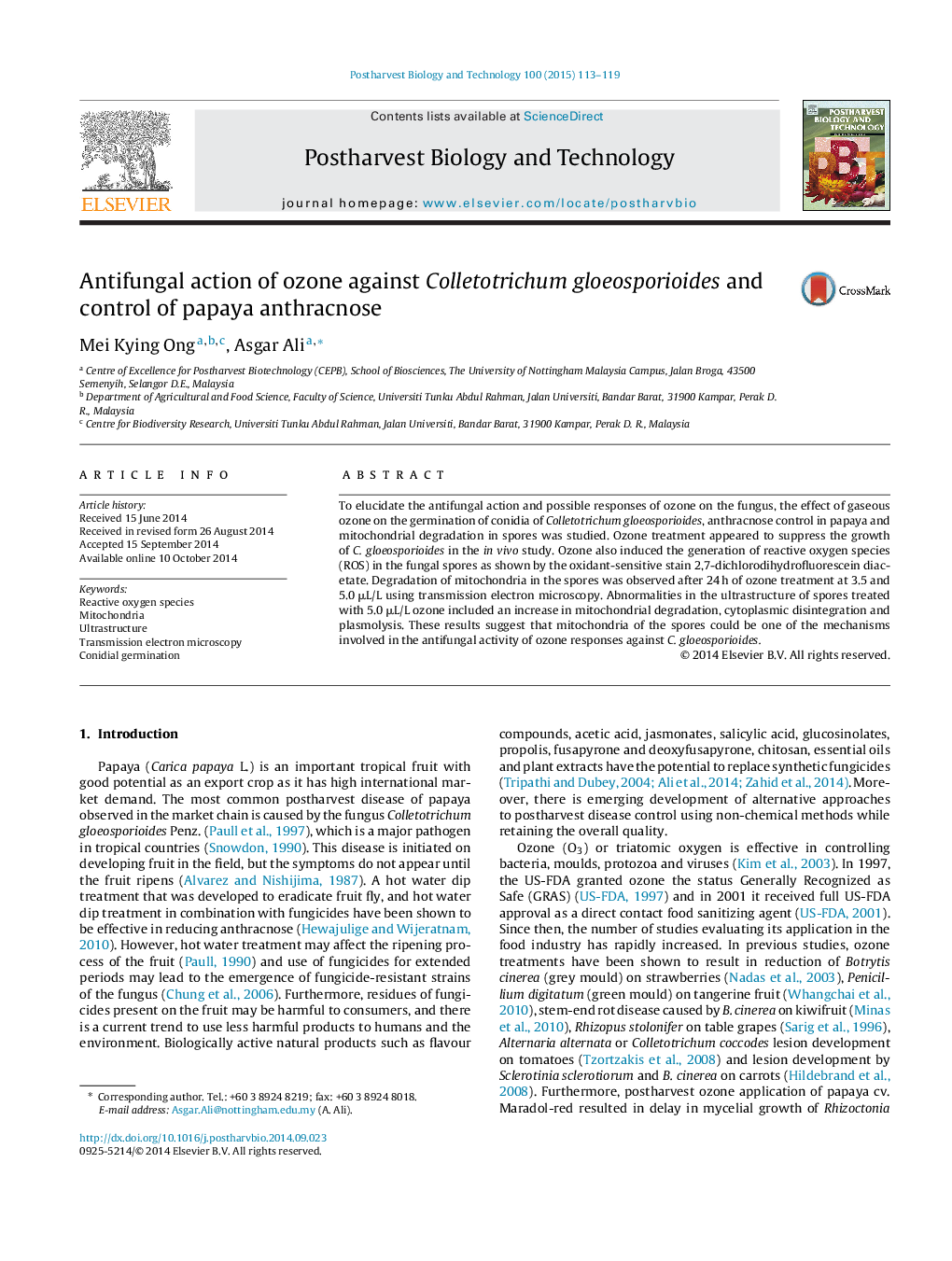| Article ID | Journal | Published Year | Pages | File Type |
|---|---|---|---|---|
| 4518068 | Postharvest Biology and Technology | 2015 | 7 Pages |
•Ozone fumigation of papaya caused significant reduction of anthracnose disease incidence and severity.•Ozone treatment induced generation of reactive oxygen species in fungal spores.•Mitochondrial degradation in spores is among the possible antifungal modes of action of ozone.•High concentration of ozone caused disintegration of spore structure.
To elucidate the antifungal action and possible responses of ozone on the fungus, the effect of gaseous ozone on the germination of conidia of Colletotrichum gloeosporioides, anthracnose control in papaya and mitochondrial degradation in spores was studied. Ozone treatment appeared to suppress the growth of C. gloeosporioides in the in vivo study. Ozone also induced the generation of reactive oxygen species (ROS) in the fungal spores as shown by the oxidant-sensitive stain 2,7-dichlorodihydrofluorescein diacetate. Degradation of mitochondria in the spores was observed after 24 h of ozone treatment at 3.5 and 5.0 μL/L using transmission electron microscopy. Abnormalities in the ultrastructure of spores treated with 5.0 μL/L ozone included an increase in mitochondrial degradation, cytoplasmic disintegration and plasmolysis. These results suggest that mitochondria of the spores could be one of the mechanisms involved in the antifungal activity of ozone responses against C. gloeosporioides.
